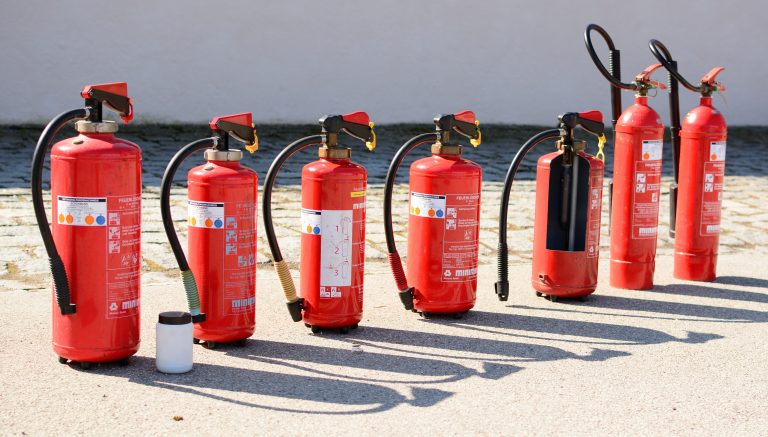Fire Extinguishers

Let’s take a look at the five different types of extinguishing agents. Most fire extinguishers display symbols to show the kind of fire on which they are to be used.
- Class A extinguishers put out fires in ordinary combustible materials such as cloth, wood, rubber, paper, and many plastics.
- Class B extinguishers are used on fires involving flammable liquids, such as grease, gasoline, oil, and oil-based paints.
- Class C extinguishers are suitable for use on fires involving appliances, tools, or other equipment that is electrically energized or plugged in.
- Class D extinguishers are designed for use on flammable metals and are often specific for the type of metal in question. These are typically found only in factories working with these metals.
Class K fire extinguishers are intended for use on fires that involve vegetable oils, animal oils, or fats in cooking appliances. These extinguishers are generally found in commercial kitchens, such as those found in restaurants, cafeterias, and caterers. Class K extinguishers are now finding their way into the residential market for use in kitchens.
There are also multi-purpose fire extinguishers – such as those labeled “B-C” or “A-B-C” – that can be used on two or more types of fires.
Like we said in the how to video; remember to always let professionals do their job. If you have the slightest doubt about your ability to fight a fire….EVACUATE IMMEDIATELY!
HOW TO USE A FIRE EXTINGUISHER
Fire extinguishers can save lives and property if used properly and individuals are trained beforehand.
If a fire should break out, sound the fire alarm and call the fire department, if appropriate.
Identify a safe evacuation path before approaching the fire with an extinguisher.
Do not allow the fire, heat, or smoke to come between you and your evacuation path.
Most fire extinguishers operate using the following P.A.S.S. technique:
- PULL… Pull the pin. This will also break the tamper seal.
- AIM… Aim low, pointing the extinguisher nozzle at the base of the fire.
- SQUEEZE… Squeeze the handle to release the extinguishing agent.
- SWEEP… Sweep from side to side at the base of the fire until it appears to be out. Watch the area. If the fire re-ignites, repeat steps 2 – 4.
Remember; always let professionals do their job. If you have the slightest doubt about your ability to fight a fire….EVACUATE IMMEDIATELY!
Note: Do not touch the plastic discharge horn on CO2 extinguishers, it gets very cold and may damage skin.
